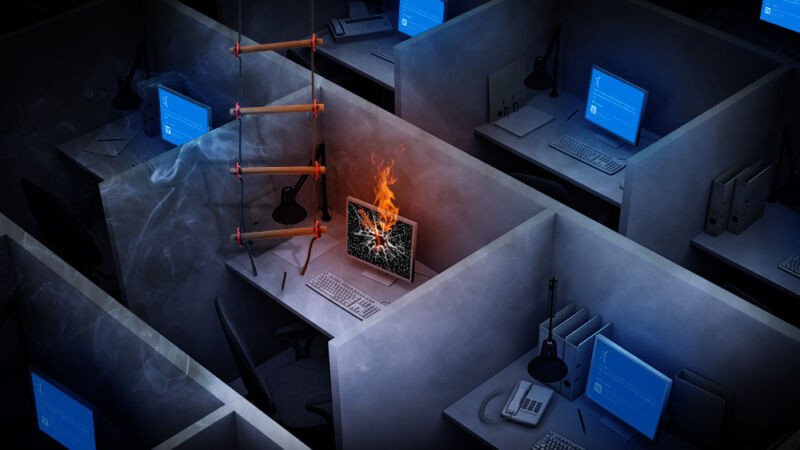The future of work looks like staying out of the office

Enlarge / Work in an actual office (artist's rendering).
It's 2020: we finally live in the future! Or at least a future-one where broadband Internet connections and portable, reasonably high-powered computing tools are pervasive and widely accessible, even if they aren't yet universal. Millions of workers, including all of us here at Ars, use those tools to do traditional "office jobs" from nontraditional home offices.
Tens of millions of jobs at all points of the income and skill spectrum are of course not suited to remote work. Doctors, dentists, and countless other healthcare workers of the world will always need to be hands-on with patients, just as teachers need to be in schools, construction workers need to be on building sites, scientists need to be in labs, wait staff need to be in restaurants, judges need to be in court, and hospitality employees need to be in hotels. All of that said, though, many more of the hundreds of different kinds of jobs Americans do can be done off-site than currently are.
Roughly a quarter of us are already doing at least some work remotely. About 24 percent of US workers employed full-time did "some or all" of their work at home, according to the most recent federal data available. Even as some workplaces become increasingly distributed around the nation and the world, though, others are reversing course and doubling down on the corporate campus. So as we here at Ars look toward the future of work, we find ourselves wondering: employers and employees alike benefit from getting some folks out of cubeville, so what are so many businesses and managers afraid of?
Read 45 remaining paragraphs | Comments